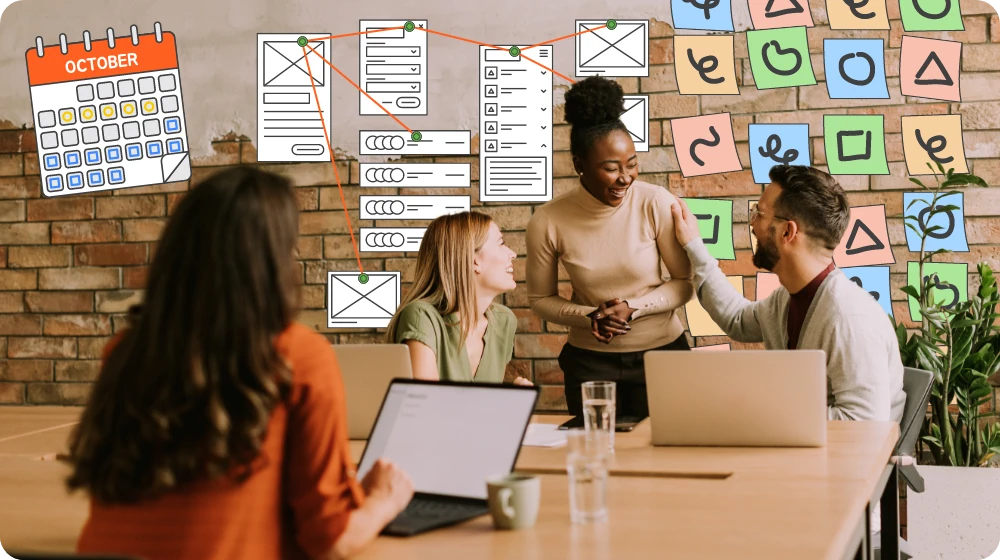Group Decision Making Techniques
How To Implement Group Decision Making Techniques
Collaborative decision making is a critical function within any organization. While individuals may provide quick solutions in simple scenarios, complex and impactful choices frequently benefit from the collective input and varied perspectives of a group interaction. Successfully navigating this requires structured and effective group decision making techniques that engage all team members, promoting balanced contributions and leading to informed, supported decisions.

Understanding Group Decision Making
Collective decision making refers to the collaborative process in which multiple individuals (group members) contribute towards choosing among alternative solutions. This process leverages the diverse knowledge, skills, experiences, and insights of the entire team, aiming to reach well-rounded and comprehensive decisions. Effective group decision making processes help organizations to avoid pitfalls common in individual decision making, such as limited perspectives, bias, or incomplete analysis.
Benefits of Group Decision Making Techniques
Implementing group decision making techniques yields several benefits:
- Greater innovation: Diverse perspectives foster creativity, enabling the group to consider innovative solutions and alternatives.
- Enhances problem-solving: Complex problems benefit from collective wisdom, which offers deeper insights and more thorough evaluations.
- Higher acceptance and commitment: Participation in group decisions ensures buy-in from the entire group, increasing support and commitment to the final decision.
- Improved accuracy: Group decisions often reflect more accurate and robust outcomes, as varied inputs reduce individual biases and oversights.
Common Group Decision Making Techniques
Selecting the most appropriate technique depends on multiple factors, including decision urgency, group size, complexity, and organizational culture. Below are a few different ways to convene effectively as a group:
1. Brainstorming session
A brainstorming session is an informal yet structured method that encourages not just leaders but other group members to generate ideas without initial criticism or evaluation. All the ideas proposed during a brainstorming session are recorded in meeting notes, then systematically reviewed and assessed for feasibility and impact.
2. Nominal group technique
The nominal group technique is a structured decision making method designed to ensure equal participation and reduce biases or dominant influences. Here, each group member independently writes down ideas or solutions. These ideas are then anonymously presented to the entire group, discussed, clarified, and individually ranked by team members. The solution with the highest overall ranking is typically selected as the final decision.
3. Democratic decision making
Democratic decision making relies on the principle of majority rules. This technique involves group members openly discussing various possible solutions, followed by a voting system. The decision receiving the majority of votes becomes the final decision. While efficient and straightforward, this method risks overlooking minority viewpoints or innovative but less popular ideas.
4. Group consensus
Group consensus involves extensive discussion group meetings aimed at achieving unanimous agreement. It requires collaboration, negotiation, and compromise from all group members to reach a mutually acceptable final decision. While potentially time-consuming, consensus building significantly enhances team unity and collective ownership.
5. Decision tree
A decision tree is a flow-chart-style model that repeatedly splits data into branches based on feature values, creating nodes and leaves that represent alternative outcomes. By following each node’s yes-or-no question from the root to a leaf, you trace an easy-to-interpret path that yields a final prediction or decision.
6. Delphi technique
The Delphi method or technique is a structured process for forecasting or problem-solving that gathers insights from a panel of experts through several anonymized questionnaire rounds. After each round, aggregated feedback is shared so participants can revise their opinions, gradually converging toward a well-reasoned consensus.
7. Dialectical inquiry
Dialectical inquiry is when you split the group into two teams: one champions an idea while the other tries to poke holes in it. Hearing both sides helps everyone blend the best points and land on a smarter decision.
Step-by-Step Implementation of Group Decision Making Techniques
Effectively implementing above average group decision making techniques involves following clear, structured steps:
Step 1: Define the decision objective clearly
A clear understanding of the problem or opportunity is essential before engaging the group. Defining objectives clarifies expectations and sets the stage for focused, productive discussions.
Step 2: Select the appropriate technique
Carefully choose the group decision making technique best suited for your context. For urgent decisions, democratic decision making may be optimal, while nominal group technique or consensus might suit complex, high-impact decisions better.
Step 3: Facilitate open group discussion
Team leaders or facilitators should encourage open, balanced discussions where every group member feels respected and heard. Avoid allowing any single voice to dominate; ensure equitable participation by prompting quieter group members to contribute.
Step 4: Generate and evaluate alternative solutions
Encourage thorough exploration of alternative solutions through methods like structured brainstorming or nominal group technique. Evaluate these possible solutions objectively, considering pros and cons, implications, feasibility, and alignment with organizational goals.
Step 5: Reach and communicate the final decision
Once alternative solutions are evaluated, employ your chosen group decision making technique to reach the final decision. Clearly communicate the decision, outlining expectations, roles, and responsibilities for implementation.
Step 6: Implement and monitor the decision
Implementation should follow a structured plan to ensure you’re consistently on the same page. Monitor the progress regularly, assess effectiveness, and remain flexible to adapt if the outcomes do not align with expectations.
Challenges in Group Decision Making
While highly beneficial, group techniques can face several potential challenges:
- Groupthink: A phenomenon where group cohesion and harmony override critical evaluation of alternative solutions, leading to suboptimal decisions.
- Dominance by strong personalities: Certain individuals might dominate group discussions, suppressing alternative ideas and reducing decision quality.
- Time-insensitive processes: Reaching consensus or engaging in extensive discussion can significantly prolong decision making timelines.
Overcoming these challenges involves proactive facilitation, encouraging critical thinking, balancing participation, and providing clear guidelines to avoid groupthink.
Tools Supporting Group Decision Making Techniques
Leveraging various decision making tools enhances the effectiveness and efficiency of group decision making:
- Digital voting platforms: Facilitate rapid democratic decision making by capturing group preferences in real-time.
- Collaboration software: Applications like Trello, Asana, or Microsoft Teams provide structured platforms for discussions and task tracking, supporting the group decision making process.
- Mind-mapping software: These visual tools help organize complex ideas and relationships within a user-friendly interface, particularly useful during brainstorming sessions.
Best Practices in Group Decision Making
To maximize the effectiveness of group decision making methods, consider implementing these best practices:
- Promote inclusivity: Ensure all team members are actively involved and have equal opportunities to contribute in an open discussion. Having a diverse group of perspectives can also help you reach more creative ideas.
- Encourage consutrctive debate: Facilitate healthy, respectful debate to examine all angles and prevent premature agreement.
- Ensure transparency: Clearly communicate decision-making criteria and processes to build trust and clarity among group members.
- Assign clear roles: Designate roles such as facilitator, note-taker, and advocate for alternative viewpoints to structure discussions effectively.
Real-World Examples of Effective Group Decision Making
Example 1: Technology company product development
A software company implemented the nominal group technique to decide on new product features. Initially, each team member individually comes up with potential ideas. These were then anonymously presented and collectively discussed. Group members ranked each suggestion, ensuring fair consideration. The approach prevented senior members from dominating discussions, enhancing innovation and resulting in a successful product launch.
Example 2: Crisis management scenario
A manufacturing firm encountered supply chain disruptions and quickly utilized democratic decision making. Group members rapidly evaluated alternative solutions and held a quick vote to determine immediate actions. This democratic process enabled swift responses, minimizing business disruption and operational losses.
Effectively implementing group decision making techniques significantly enhances decision quality, project management, team engagement, and organizational behavior and performance. Recognizing the appropriate contexts for various techniques, fostering balanced group dynamics, and proactively managing potential challenges are essential to create a more beneficial outcome. Employing structured approaches, supported by relevant tools and best practices, ensures successful outcomes that leverage collective intelligence, promote inclusivity, and strengthen organizational cohesion.















